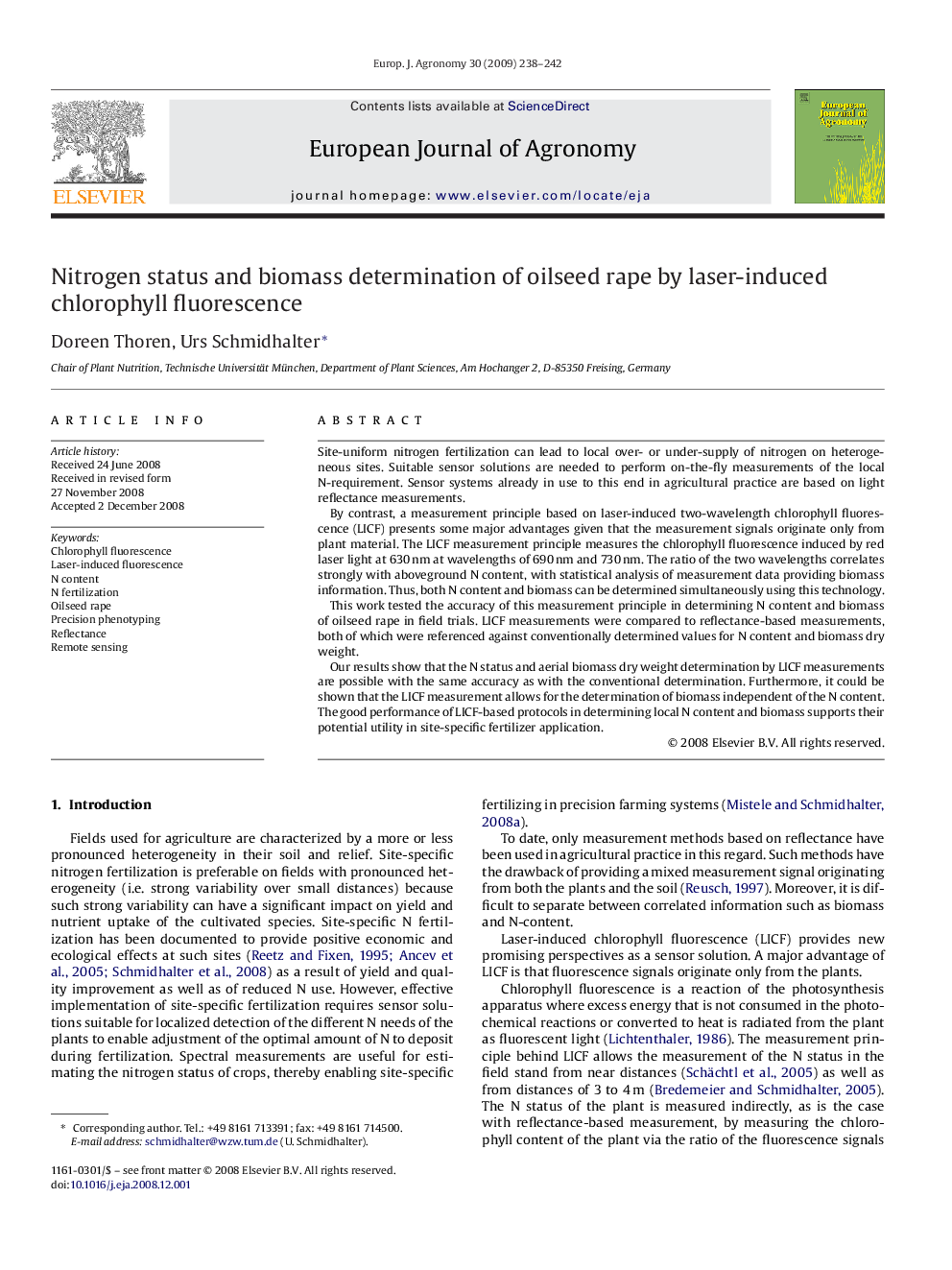| Article ID | Journal | Published Year | Pages | File Type |
|---|---|---|---|---|
| 4509501 | European Journal of Agronomy | 2009 | 5 Pages |
Site-uniform nitrogen fertilization can lead to local over- or under-supply of nitrogen on heterogeneous sites. Suitable sensor solutions are needed to perform on-the-fly measurements of the local N-requirement. Sensor systems already in use to this end in agricultural practice are based on light reflectance measurements.By contrast, a measurement principle based on laser-induced two-wavelength chlorophyll fluorescence (LICF) presents some major advantages given that the measurement signals originate only from plant material. The LICF measurement principle measures the chlorophyll fluorescence induced by red laser light at 630 nm at wavelengths of 690 nm and 730 nm. The ratio of the two wavelengths correlates strongly with aboveground N content, with statistical analysis of measurement data providing biomass information. Thus, both N content and biomass can be determined simultaneously using this technology.This work tested the accuracy of this measurement principle in determining N content and biomass of oilseed rape in field trials. LICF measurements were compared to reflectance-based measurements, both of which were referenced against conventionally determined values for N content and biomass dry weight.Our results show that the N status and aerial biomass dry weight determination by LICF measurements are possible with the same accuracy as with the conventional determination. Furthermore, it could be shown that the LICF measurement allows for the determination of biomass independent of the N content. The good performance of LICF-based protocols in determining local N content and biomass supports their potential utility in site-specific fertilizer application.
